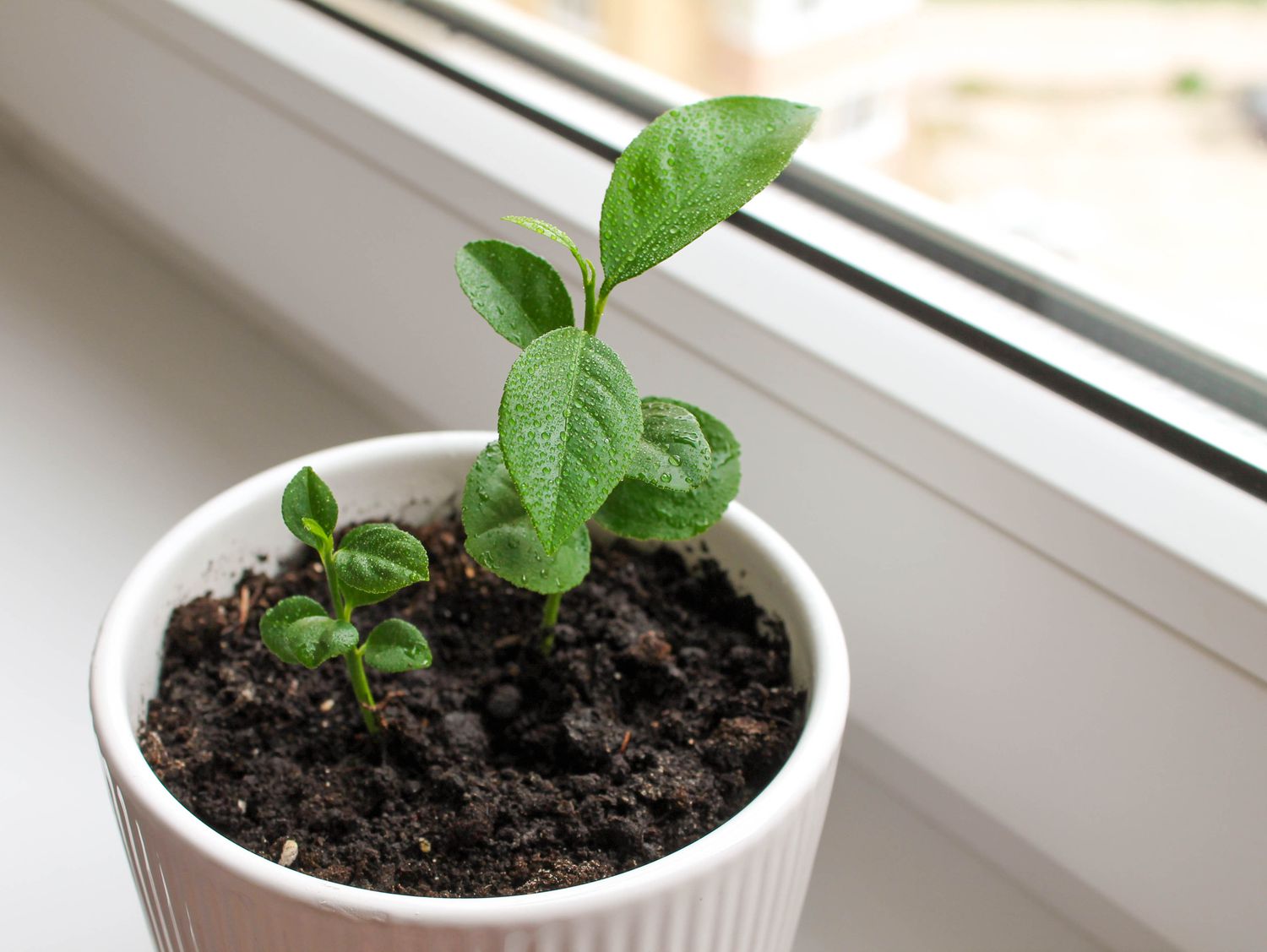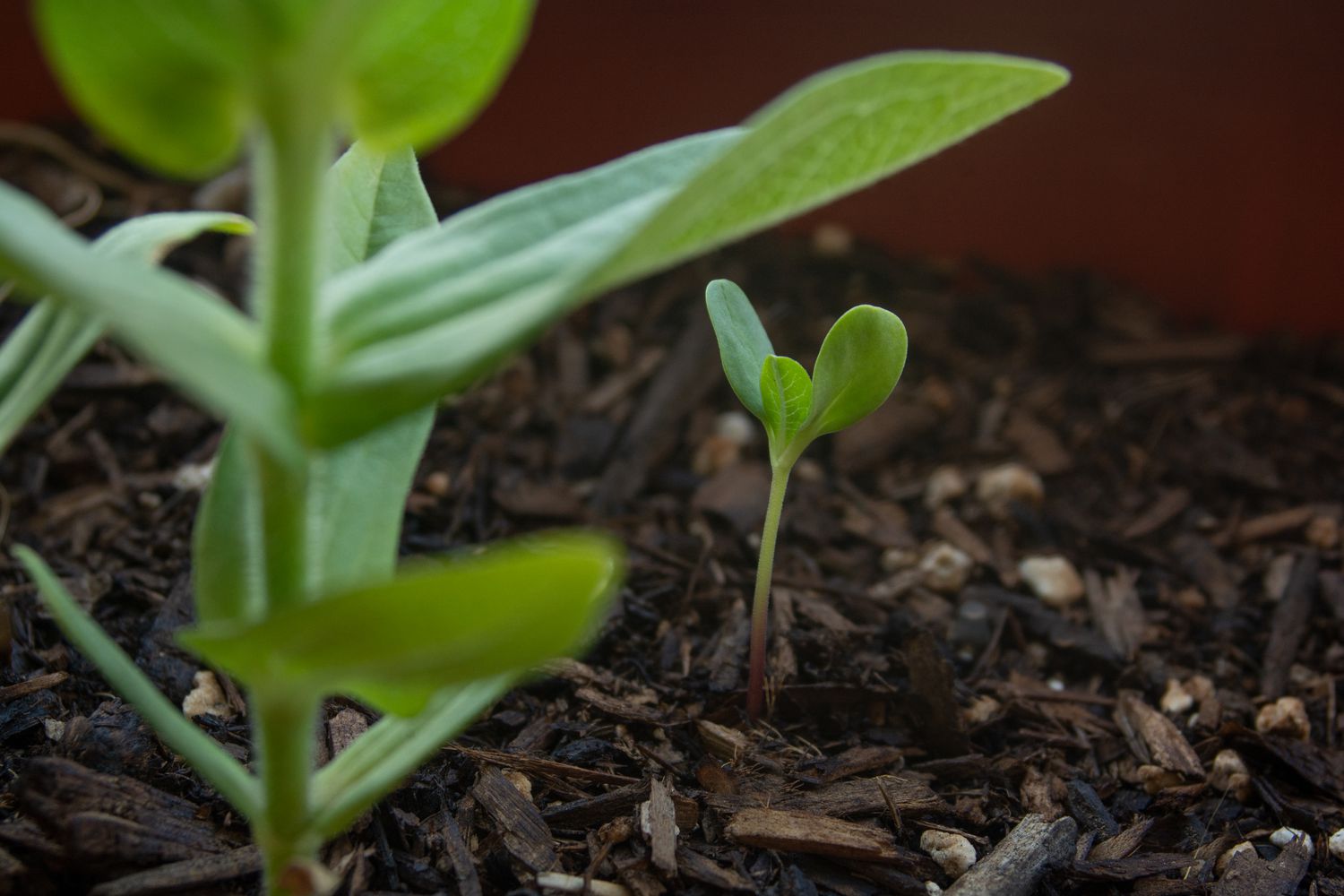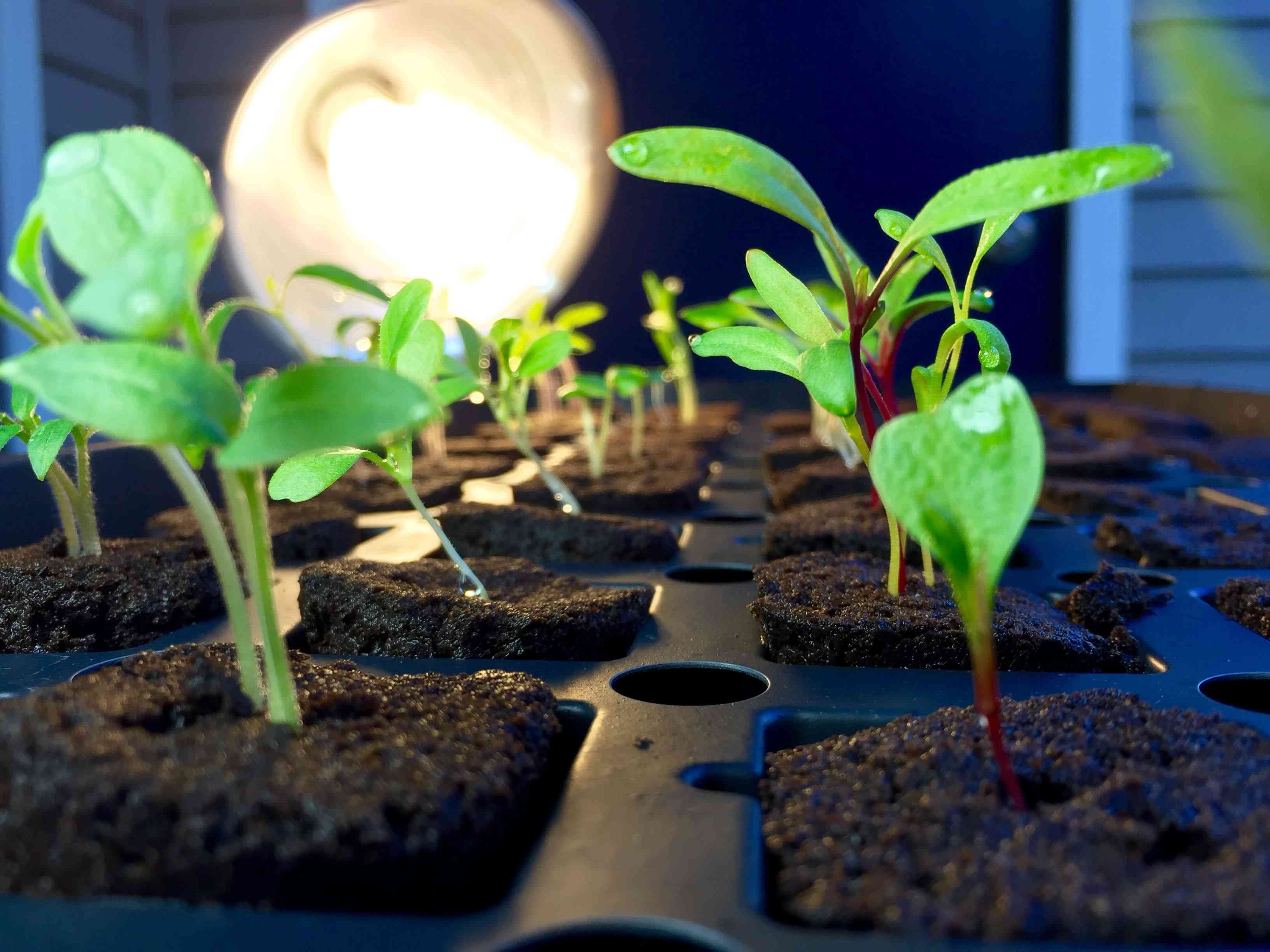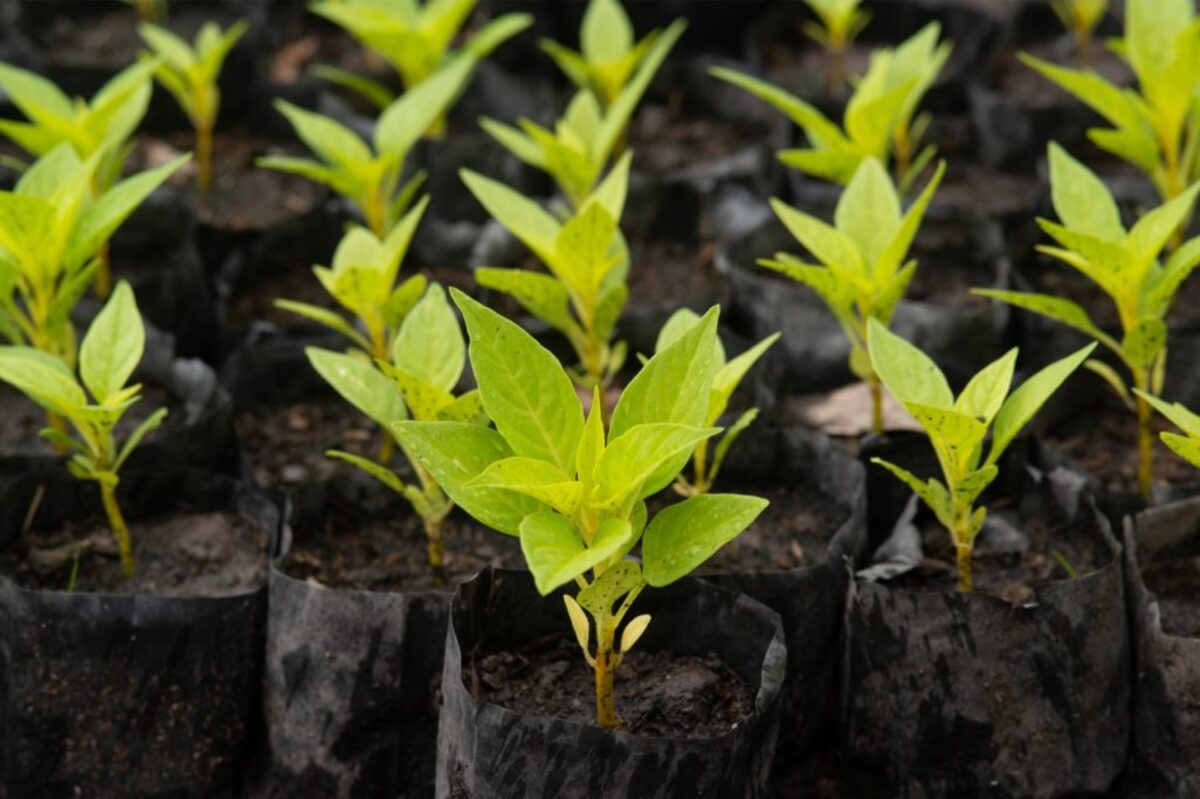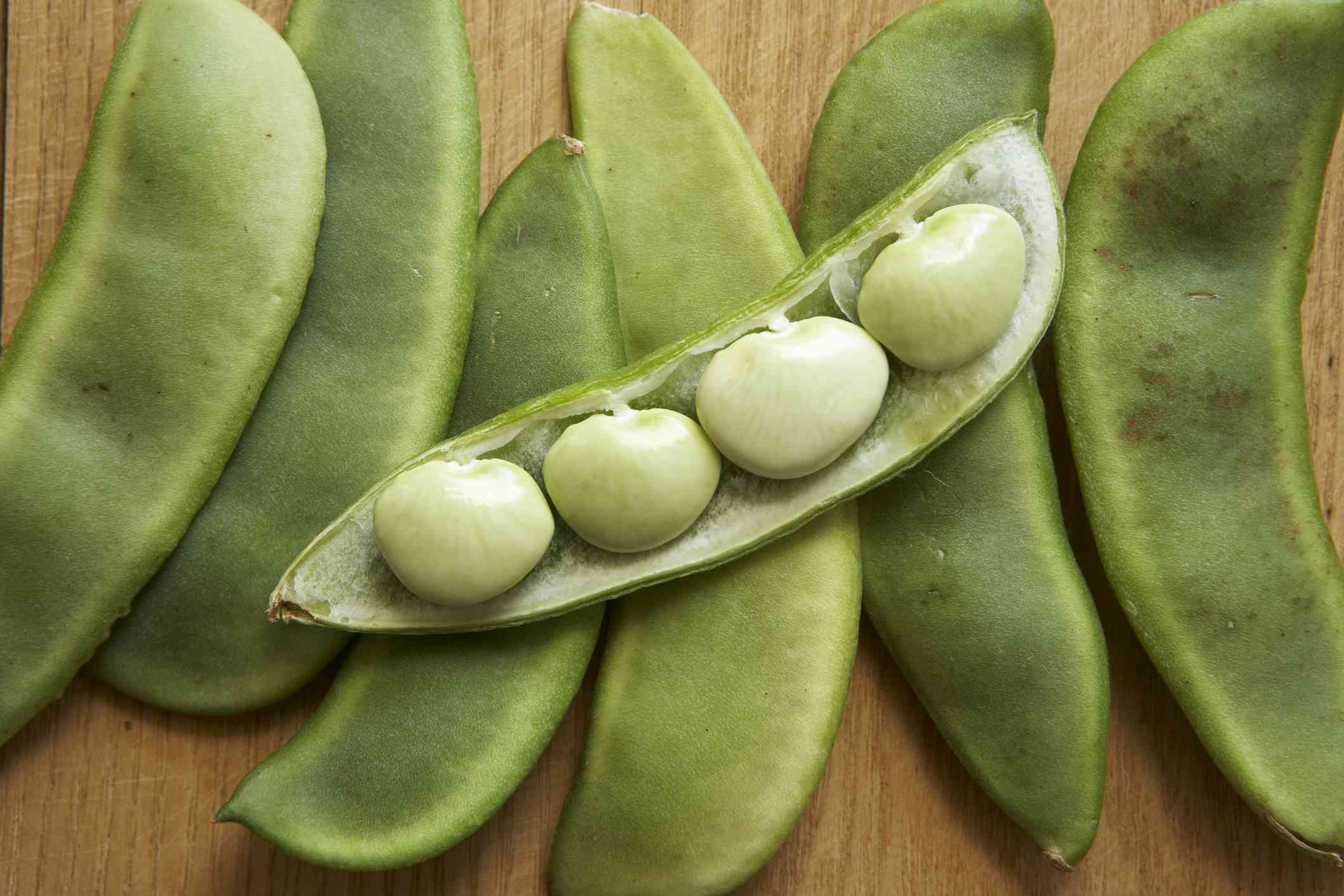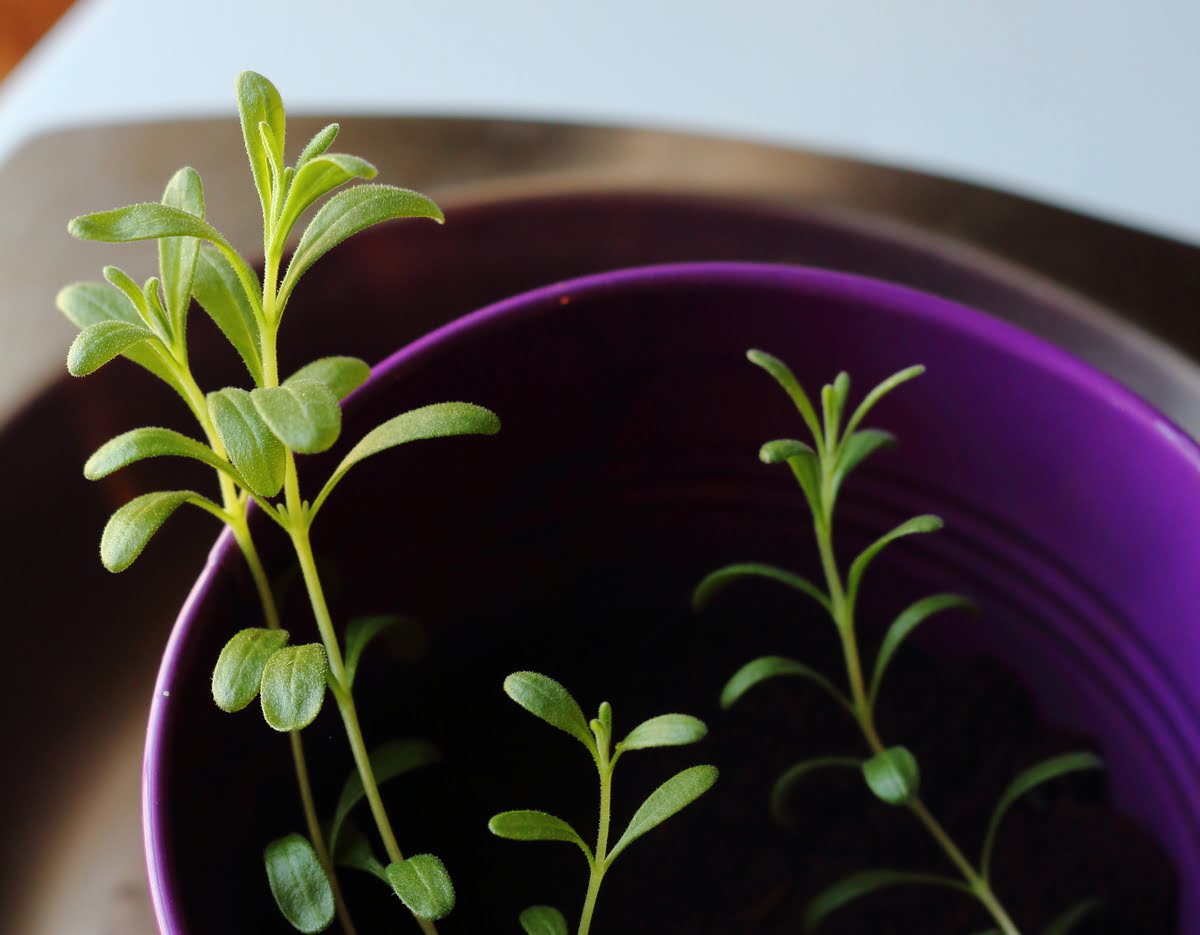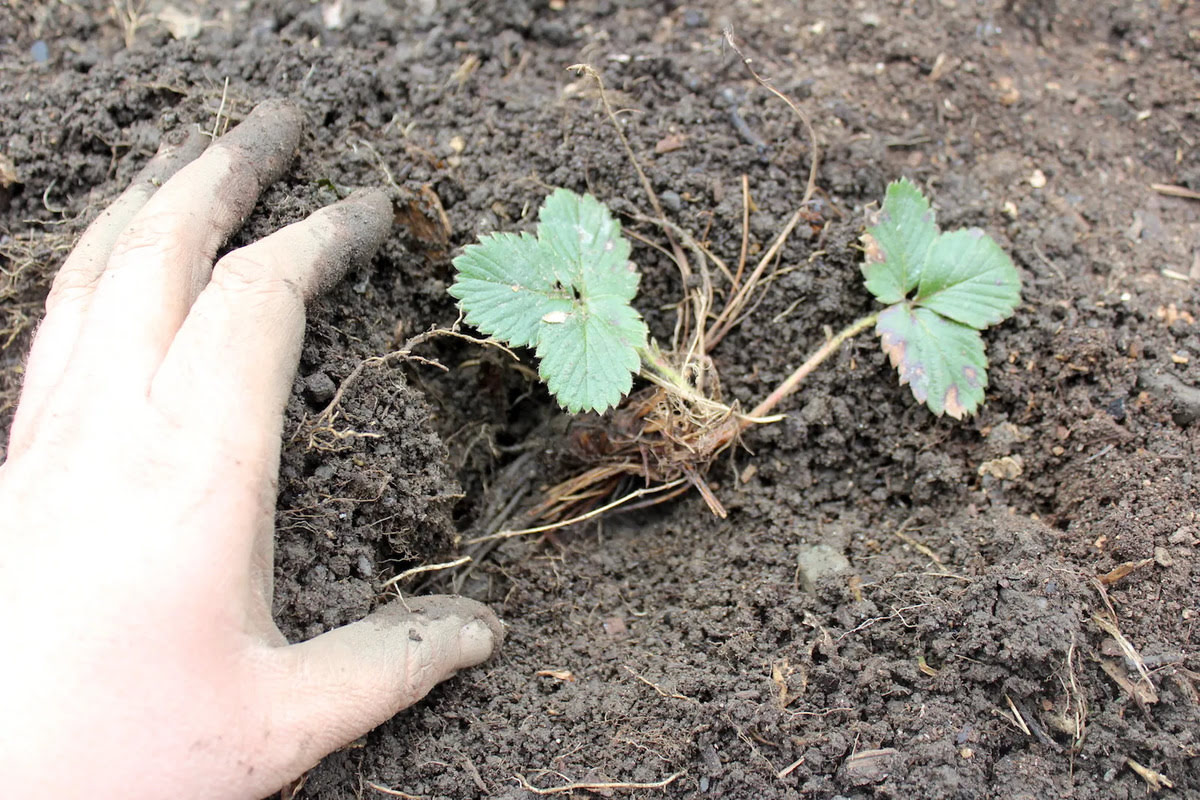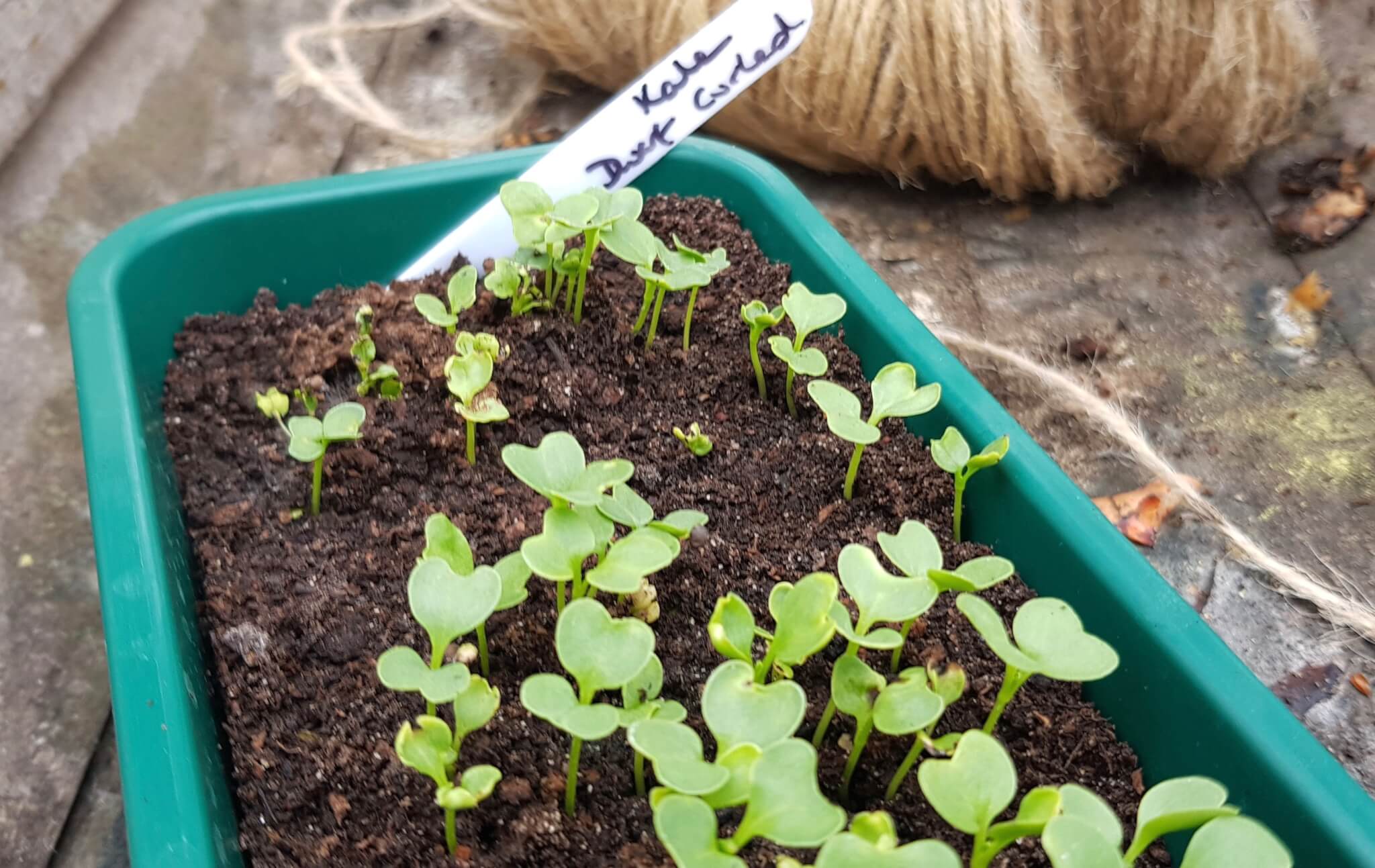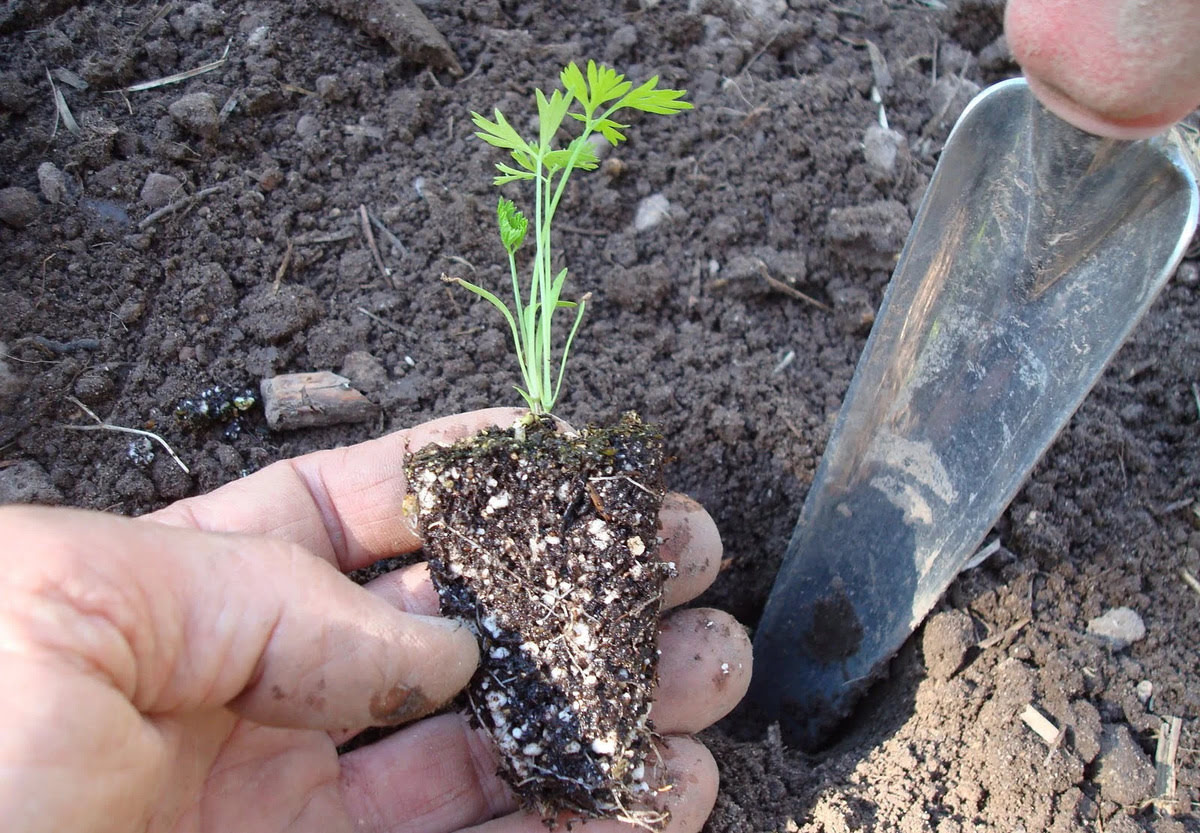Home>Types of Gardening>Edible Gardening>When To Transplant Green Bean Seedlings


Edible Gardening
When To Transplant Green Bean Seedlings
Published: January 5, 2024
Discover the best time and methods for transplanting green bean seedlings in your edible garden. Learn how to ensure a successful transition for your plants.
(Many of the links in this article redirect to a specific reviewed product. Your purchase of these products through affiliate links helps to generate commission for Chicagolandgardening.com, at no extra cost. Learn more)
Table of Contents
Introduction
Green beans, also known as snap beans or string beans, are a popular choice for home gardeners due to their ease of cultivation and delicious, nutritious harvest. Transplanting green bean seedlings is a crucial step in the gardening process, as it allows the young plants to establish themselves in a new, more spacious environment, promoting healthy growth and abundant yields.
Transplanting green bean seedlings involves carefully moving them from their initial indoor or nursery containers to the outdoor garden bed, where they will continue their journey to maturity. This process requires strategic timing and proper technique to ensure the seedlings' successful acclimatization to their new surroundings.
In this comprehensive guide, we will delve into the best practices for transplanting green bean seedlings, including the optimal timing for this crucial step, preparation techniques, the actual transplanting process, and post-transplant care. By understanding these key aspects, you can empower yourself to nurture robust green bean plants that yield a bountiful harvest.
Join us as we explore the art and science of transplanting green bean seedlings, and embark on a journey to cultivate a thriving and productive edible garden.
Understanding Green Bean Seedlings
Before delving into the intricacies of transplanting green bean seedlings, it’s essential to grasp the nature and characteristics of these young plants. Green bean seedlings typically emerge from the soil within 7 to 10 days after planting the seeds. At this stage, they consist of delicate stems, small leaves, and an underdeveloped root system.
Green bean seedlings are particularly sensitive to environmental conditions, requiring adequate sunlight, moisture, and protection from harsh elements. As they grow, their roots become more robust, enabling them to absorb nutrients and water from the soil efficiently. Understanding the developmental stages of green bean seedlings is crucial for determining the optimal time for transplanting, ensuring that they are strong and resilient enough to thrive in their new outdoor environment.
Furthermore, familiarizing yourself with the specific characteristics of green bean seedlings, such as their preferred soil type, ideal temperature range, and susceptibility to pests and diseases, will empower you to provide the best possible care during and after the transplanting process. By gaining insights into the unique traits and requirements of green bean seedlings, you can cultivate a deeper appreciation for these remarkable plants and enhance your ability to nurture them to their full potential.
Best Time for Transplanting
Choosing the optimal time for transplanting green bean seedlings is a critical decision that significantly impacts their overall health and productivity. As a general rule of thumb, green bean seedlings should be transplanted outdoors after the last frost date in your region. This timing is crucial, as exposure to frost can severely damage or kill the tender seedlings, thwarting their growth and potential yield.
It’s essential to consult local gardening resources or use online tools to determine the average last frost date in your area, as this information forms the basis for scheduling the transplanting process. By aligning the transplanting timeline with the last frost date, you can safeguard the young green bean plants from the potential harm posed by lingering winter conditions.
Additionally, monitoring the soil temperature is vital when deciding on the best time for transplanting green bean seedlings. These plants thrive in warm soil, with an optimal temperature range of 70 to 85 degrees Fahrenheit. If the soil is too cold, the seedlings may struggle to establish themselves, leading to stunted growth and diminished productivity. By waiting until the soil has warmed to the ideal range, you can provide the seedlings with a favorable environment for rapid root development and robust growth.
Ultimately, the best time for transplanting green bean seedlings aligns with the transition to consistently warm weather, ensuring that the plants have the best possible start in their new outdoor home. By adhering to these timing guidelines, you can set the stage for vibrant, thriving green bean plants that promise a plentiful harvest in the months to come.
Preparing for Transplanting
Prior to the actual transplanting process, it’s essential to prepare the green bean seedlings and their designated outdoor growing area to facilitate a smooth and successful transition. Here are the key steps to prepare for transplanting green bean seedlings:
- Harden Off the Seedlings: About a week before the planned transplanting date, gradually expose the green bean seedlings to outdoor conditions to acclimate them to the elements. Start by placing them in a sheltered, partially shaded area for a few hours each day, gradually increasing their exposure to sunlight and outdoor air. This hardening off process toughens the seedlings, reducing the shock of the transition to the garden bed.
- Amend the Soil: Prepare the garden bed by ensuring that the soil is well-draining, loose, and rich in organic matter. Incorporate compost or well-rotted manure to enhance the soil’s fertility and structure, providing an optimal foundation for the transplanted seedlings to thrive.
- Space Planning: Determine the spacing requirements for the green bean plants based on the specific variety you are growing. Create evenly spaced rows or mounds in the garden bed, allowing ample room for the seedlings to spread out and receive adequate sunlight and airflow.
- Provide Support Structures: If you are growing climbing or pole bean varieties, install trellises, stakes, or other support structures in the garden bed to accommodate the upward growth of the plants. This proactive measure ensures that the seedlings have the necessary support as they mature and produce an abundance of beans.
- Water the Seedlings: Ensure that the green bean seedlings are well-hydrated before transplanting. Water them gently a day or two before the planned transplanting date to minimize stress during the process.
By diligently preparing the green bean seedlings and their new outdoor habitat, you can lay the groundwork for a seamless and successful transplanting experience, setting the stage for robust growth and a flourishing harvest in the months ahead.
Transplanting Process
The actual transplanting process marks a pivotal moment in the journey of green bean seedlings, as they make the transition from their indoor or nursery containers to the outdoor garden bed. Follow these steps to execute the transplanting process with precision and care:
- Select the Ideal Time: Choose a calm, overcast day for transplanting, preferably in the late afternoon or early evening. This timing minimizes the stress on the seedlings, allowing them to adjust to their new environment without the harsh glare of the midday sun.
- Dig Planting Holes: Using a trowel or garden shovel, create planting holes in the prepared garden bed, ensuring that they are spaced according to the specific requirements of the green bean variety. The holes should accommodate the root system of each seedling comfortably.
- Handle with Care: Gently remove the green bean seedlings from their containers, being mindful not to disturb the roots excessively. If the seedlings are root-bound, carefully tease apart the roots to encourage outward growth in the new soil.
- Plant with Precision: Place each seedling in a planting hole, ensuring that the soil level matches the depth at which they were previously growing. Backfill the holes with soil and gently firm the surrounding area to secure the seedlings in place.
- Water Thoroughly: After transplanting, provide the seedlings with a generous drink of water to settle the soil around their roots and alleviate any transplant shock. Ensure that the soil remains consistently moist in the days following the transplant.
- Protect from Pests: Implement measures to safeguard the newly transplanted green bean seedlings from potential pests and critters. Consider using organic pest deterrents or physical barriers to shield the young plants as they adjust to their outdoor environment.
By meticulously following these steps and handling the green bean seedlings with care, you can execute the transplanting process effectively, positioning the seedlings for vigorous growth and a fruitful harvest in the upcoming growing season.
Caring for Transplanted Seedlings
After the transplanting process is complete, ongoing care and attention are essential to ensure the successful establishment and continued growth of the transplanted green bean seedlings. Here are key considerations for caring for transplanted seedlings:
- Watering: Maintain consistent moisture levels in the soil to support the growth of the transplanted seedlings. Water the plants regularly, ensuring that the soil remains evenly moist but not waterlogged. During periods of dry weather, monitor the soil closely and adjust your watering frequency as needed to prevent drought stress.
- Mulching: Apply a layer of organic mulch, such as straw or shredded leaves, around the base of the transplanted green bean seedlings. Mulch helps retain soil moisture, suppresses weed growth, and regulates soil temperature, creating a favorable environment for the plants to thrive.
- Fertilization: Once the transplanted seedlings have established themselves and begun to show new growth, consider applying a balanced, organic fertilizer to provide essential nutrients for healthy development. Follow the recommended application rates and timing based on the specific fertilizer product and the needs of the green bean plants.
- Monitoring for Pests and Diseases: Regularly inspect the transplanted seedlings for signs of pest infestation or disease. Early detection allows for prompt intervention, whether through organic pest control methods or targeted treatments to mitigate potential issues and protect the plants’ vitality.
- Support for Climbing Varieties: If you are growing climbing or pole bean varieties, monitor the growth of the plants and provide additional support as needed. Securely tie the vines to trellises or other support structures to encourage upward growth and prevent sprawling, enhancing airflow and ease of harvest.
- Harvesting and Pruning: As the transplanted green bean seedlings mature and produce pods, engage in regular harvesting to encourage continuous production. Additionally, prune any damaged or withered foliage to promote overall plant health and vigor.
By tending to the transplanted green bean seedlings with attentive care and addressing their needs throughout the growing season, you can foster robust, productive plants that yield an abundant harvest of crisp, flavorful beans for your enjoyment.
Conclusion
Transplanting green bean seedlings is a pivotal stage in the journey of cultivating these versatile and rewarding plants. By understanding the optimal timing for transplanting, preparing the seedlings and their outdoor environment with care, executing the transplanting process diligently, and providing attentive post-transplant care, you can set the stage for the successful growth and abundant harvest of green beans in your garden.
As you embark on the enriching experience of nurturing green bean seedlings, remember that each step, from the tender care of the young plants to the joy of harvesting crisp, flavorful beans, contributes to the rich tapestry of your edible garden. Embrace the process with curiosity and dedication, and relish the opportunity to witness the transformation of delicate seedlings into robust, productive plants.
With each passing day, as the green bean seedlings thrive in their new outdoor home, you are not merely tending to a garden but fostering a vibrant ecosystem that sustains and nourishes both body and soul. The act of transplanting seedlings becomes a metaphor for growth, resilience, and the enduring cycle of life, reminding us of the profound connections that bind us to the natural world.
As you savor the fruits of your labor, gathered from the flourishing green bean plants, may you find inspiration in the timeless rhythms of nature and the simple, profound pleasures of tending to a thriving garden. The journey of transplanting green bean seedlings encompasses not only the tangible rewards of a bountiful harvest but also the intangible gifts of patience, stewardship, and the enduring beauty of the natural world.
